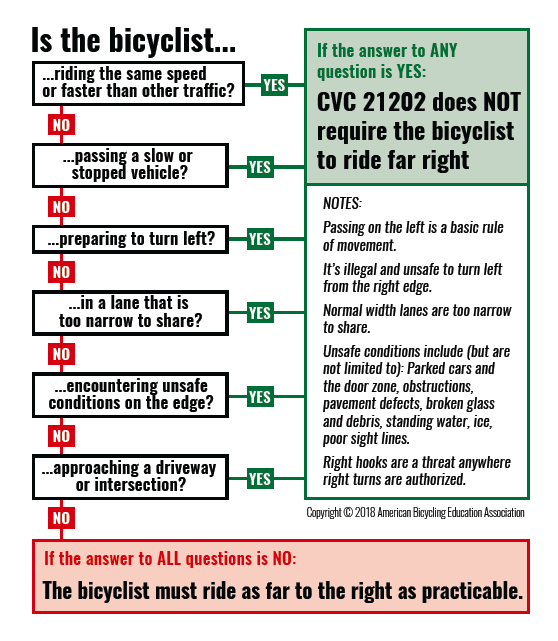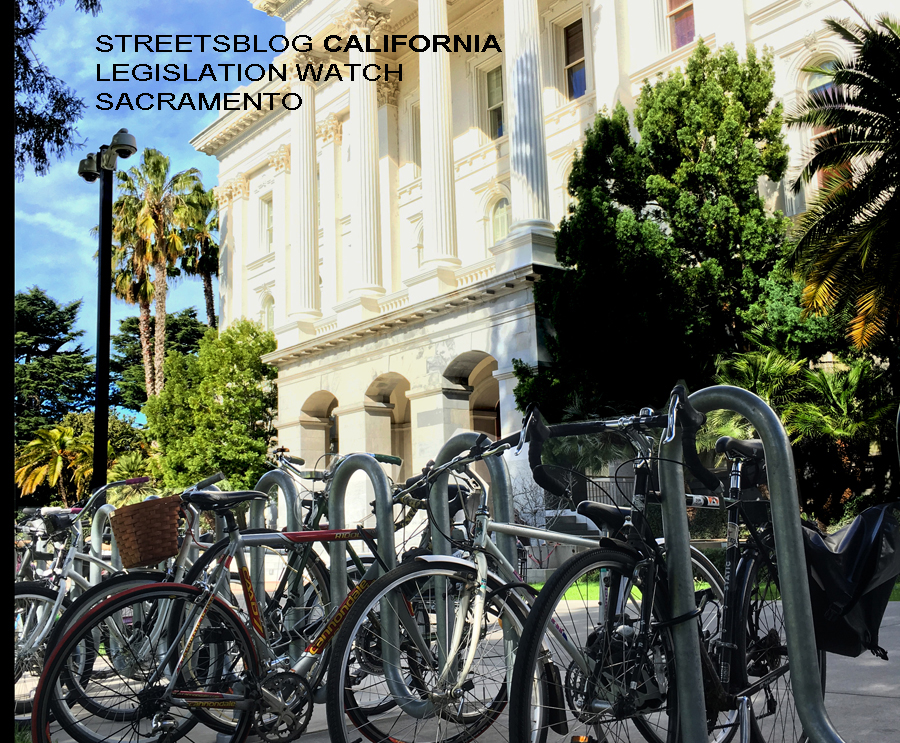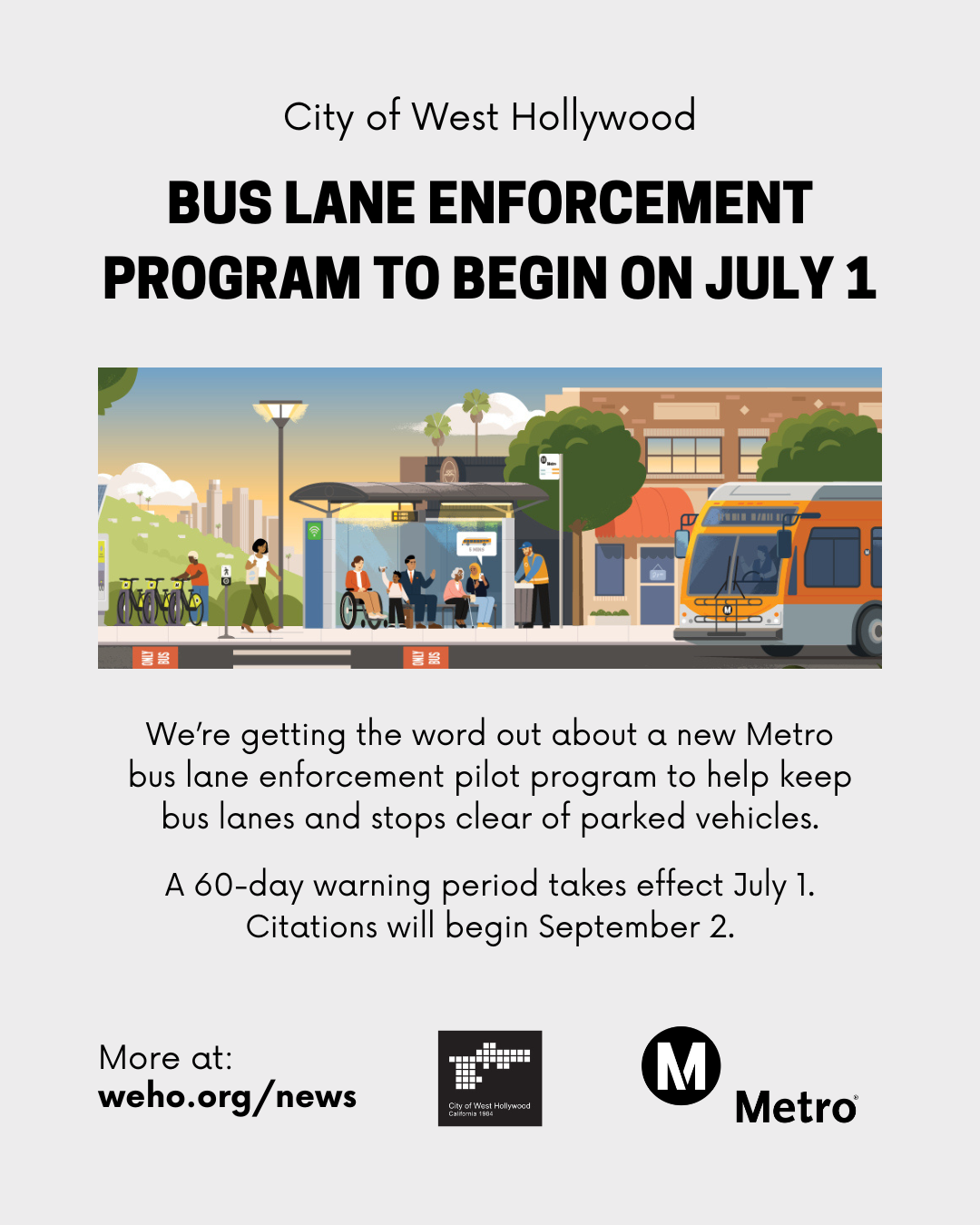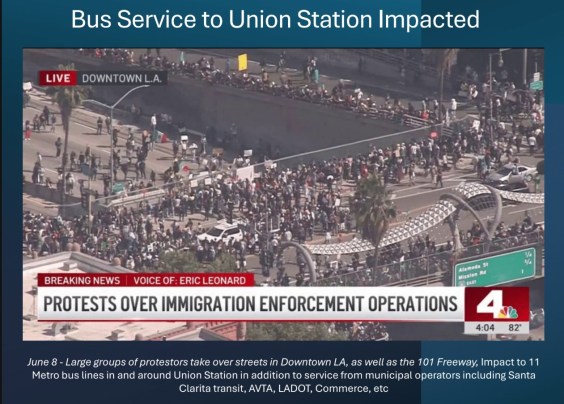The deadline to introduce bills for the first year of the new two-year California legislative session was last week, and more than 2,500 bills have been introduced in both the Assembly and the Senate. A few of them hold specific interest for bicyclists.
These include Scott Wiener's Complete Streets Bill, S.B. 127, which would require Caltrans to implement safety improvements like protected bike lanes and sidewalks every time they repave or rebuild a state-owned road. So far nothing in the bill's wording has changed since we first wrote about it. Its first hearing, in the Senate Transportation Committee, will take place some time in April.
Two other bills sponsored by the California Bicycle Coalition are aimed at cleaning up confusion in the California Vehicle Code about where bicyclists are supposed to position themselves on the road.
One, A.B. 697, is the third such attempt from Assemblymember Phil Ting (D-San Francisco), whose earlier tries on this topic ran up against strong resistance from law enforcement. It aims to clean up wording in the California Vehicle Code section 21202, which requires bicycles to be "as far as practicable" to the right of the road.
Over time, a bunch of exceptions to the rule have been added. For example, it spells out that a bicyclist may move to the left to avoid hazards--like car doors flung open--or when bikes are traveling as fast as the rest of traffic, passing other bikes, or when a lane is too narrow to share with passing vehicles. A chart from Cycling Savvy, below, meant to help explain the law, shows how confusing these exceptions make it.
Some police departments do get it--notably the Anaheim Police Department, as attested to by this video explainer they just released--but not all do. People are still getting tickets when police officers don't understand the law, and judges are upholding those tickets.
If something takes this much explanation, maybe there's something wrong with it.

"It is just a change in wording," Dave Snyder, Executive director of CalBike, wrote on the Facebook page announcing the bill. "It does NOT change legal rights and responsibilities. However, reactions to this proposal...show that people misunderstand current law, which is why it’s important to clarify it."
Snyder further explains (Streetsblog added the emphasis):
Existing law says that you have to ride as far to the right as practicable except under certain circumstances. Those circumstances are listed. One of them is when conditions make it unsafe. Those conditions are listed. One of them is when a lane is of substandard width. That condition is then defined as a lane which is too narrow for a bicycle and a vehicle to travel safely side by side within the lane. In other words, existing law provides an exception to the requirement that you must ride “as far to the right as practicable” that applies most of the time on urban streets, but it buries that exception under three dependent clauses. Every bicycle safety educator with any training teaches people on bikes to take advantage of their legal right to control the right lane until it’s wide enough that you can safely move over to let vehicles pass.
Too many people without bicycle safety training don’t know this, including judges and police officers. A judge in southern California even upheld a ticket for taking the lane because according to his reading of the law, you’re allowed to take the lane “practically all the time--and surely the legislature did not intend that.” In other words, he enforced a ticket he admitted was issued illegally because he couldn’t believe the law meant what it said.
That’s why we’re changing the wording.
A different bill, A.B. 1266 from Assemblymember Robert Rivas (D-Hollister), aims to clear up another bit of confusion by making it clear that bicyclists are allowed to go straight from a right-turn lane. The bill currently reads: "This bill would permit drivers of bicycles to disobey the directions of a traffic control device requiring a turn when pavement markings indicate that bicycles may travel straight through a right-turn only lane."
Why is it necessary? Because people on bikes are vulnerable to right-hooks--where drivers turn in front of them from the left--when they position themselves too far to the right. Car drivers should slow down and stay behind bikes when approaching intersections, making right turns from the right lane behind any bicycles, but they don't always do so. Often, occupying the left portion a right turn lane is the correct lane positioning, but unless the design makes it clear that bikes are allowed to do so, under current law it is illegal. The bill is a call for Caltrans to provide design guidance for this situation.
There are also a few "spot" bills on the docket, which are likely to be fleshed out before they are heard. Assembly Laura Friedman (D-Glendale) is working on A.B. 1112, which currently says its intent is to "enact legislation to encourage the use of micro-mobility transportation"--that is, scooters. The aim is to create some basic statewide regulations as guidelines for local jurisdictions' rules on scooters on their streets.
CalBike also wants e-bikes to be included as a "mobility option" that people can choose when they participate in the state's scrap-and-replace programs--so they can trade in a polluting car for an electric bike voucher, if they want. That is S.B. 400 from Senator Tom Umberg (D-Santa Ana).
Bills have also been introduced on transit passes, housing, distracted driving, parking, speed limits, CEQA, and other issues. We're still working through those lists and will update regularly.






